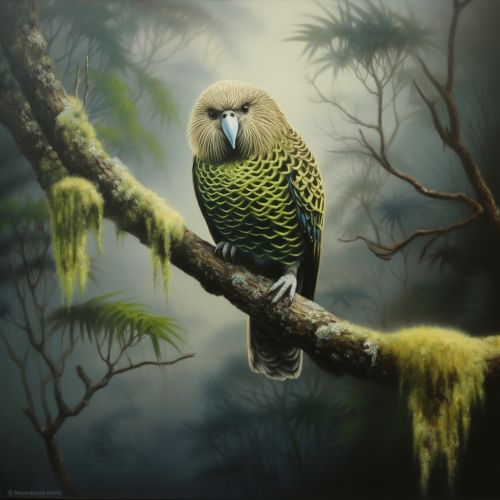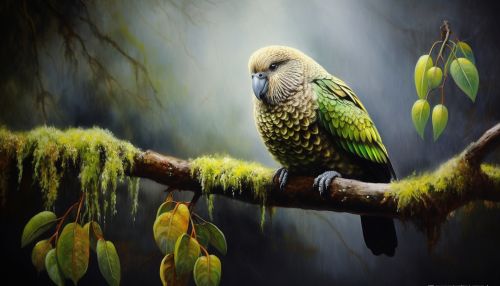Kakapo
Introduction
The Kakapo (Strigops habroptilus), also known as the owl parrot, is a species of large, flightless, nocturnal, ground-dwelling parrot of the super-family Strigopoidea native to New Zealand. It is critically endangered, with a known adult population of around 200.
Description
The Kakapo is a distinctive bird with its moss-green feathers barred with black and brown, and its large grey beak. It is the world's heaviest parrot, with males reaching up to 4 kg in weight. Despite its large size, the Kakapo cannot fly. Instead, it uses its short wings for balance and support in climbing trees.
Behavior
Kakapos are nocturnal and solitary animals, each having its own territory. They are also known for their distinctive, booming call, which can be heard up to 5 km away. This call is used by males during the breeding season to attract females.
Diet
The diet of the Kakapo is primarily herbivorous, consisting of native plants, seeds, fruits, and roots. They have also been known to eat the wood of trees, and even the bark.
Reproduction
The Kakapo has a unique breeding system, known as Lek mating, where males compete for females' attention through display and vocalizations. The female lays one to four eggs per breeding season, which are incubated for about 30 days.
Conservation
The Kakapo is critically endangered, with only around 200 known adults remaining. The primary threats to the Kakapo are habitat loss and predation by introduced species. Conservation efforts are ongoing, with a focus on habitat protection and predator control.
Cultural Significance
The Kakapo holds a significant place in the Maori culture, featuring in many of their traditional stories and legends. It is also considered a taonga, or treasure, by the Maori people.


